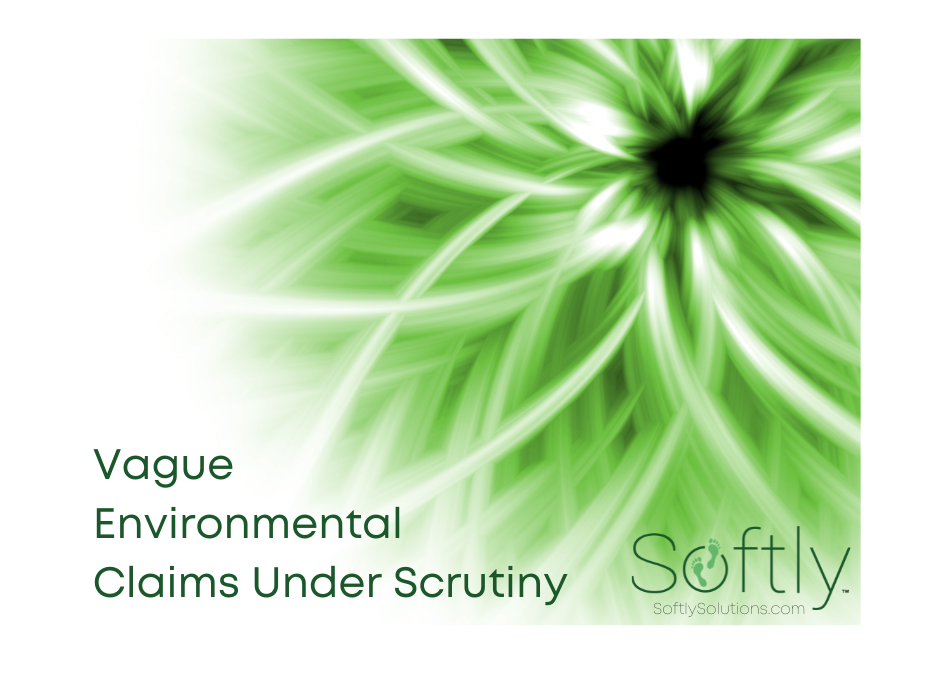A picture may be worth a thousand words, but it can also come with a hefty price if you’re not careful. Using unclear green imagery on product labels might save space, but it can lead to accusations of greenwashing and costly class-action lawsuits. Across the globe, companies are facing backlash for using misleading eco-friendly visuals and vague claims. In the U.S. alone, the number of class-action lawsuits against this practice has surged, increasing by over 300% in just the past six months.
Regulators like the U.S. Federal Trade Commission and the UK’s Competition and Markets Authority are investigating major corporations like Procter & Gamble and Unilever for deceptive marketing tactics. Staying informed about green marketing guidelines can help you truthfully showcase your product’s environmental benefits while protecting your company from legal missteps.
FTC Shows How NOT to Use Green Imagery
The FTC’s Green Guides, first introduced in 1992 and last updated in 2012, are currently under revision to tackle the growing issue of greenwashing. These guides serve as a valuable resource for businesses, helping you make accurate environmental marketing claims, understand how consumers interpret those claims, and ensure your messaging is truthful and avoids deception.
According to the current FTC guidelines, “It is deceptive to misrepresent, directly or by implication, that a product, package, or service offers a general environmental benefit.” (§ 260.4). Terms that imply general environmental benefits include phrases like environmentally conscious, eco-friendly, and all-natural. Pictures and images of nature can also convey deceptive environmental benefits.
The FTC offers clear examples of both acceptable and misleading green marketing practices. Below is an example of a deceptive ad using green imagery recreated by ChatGPT.
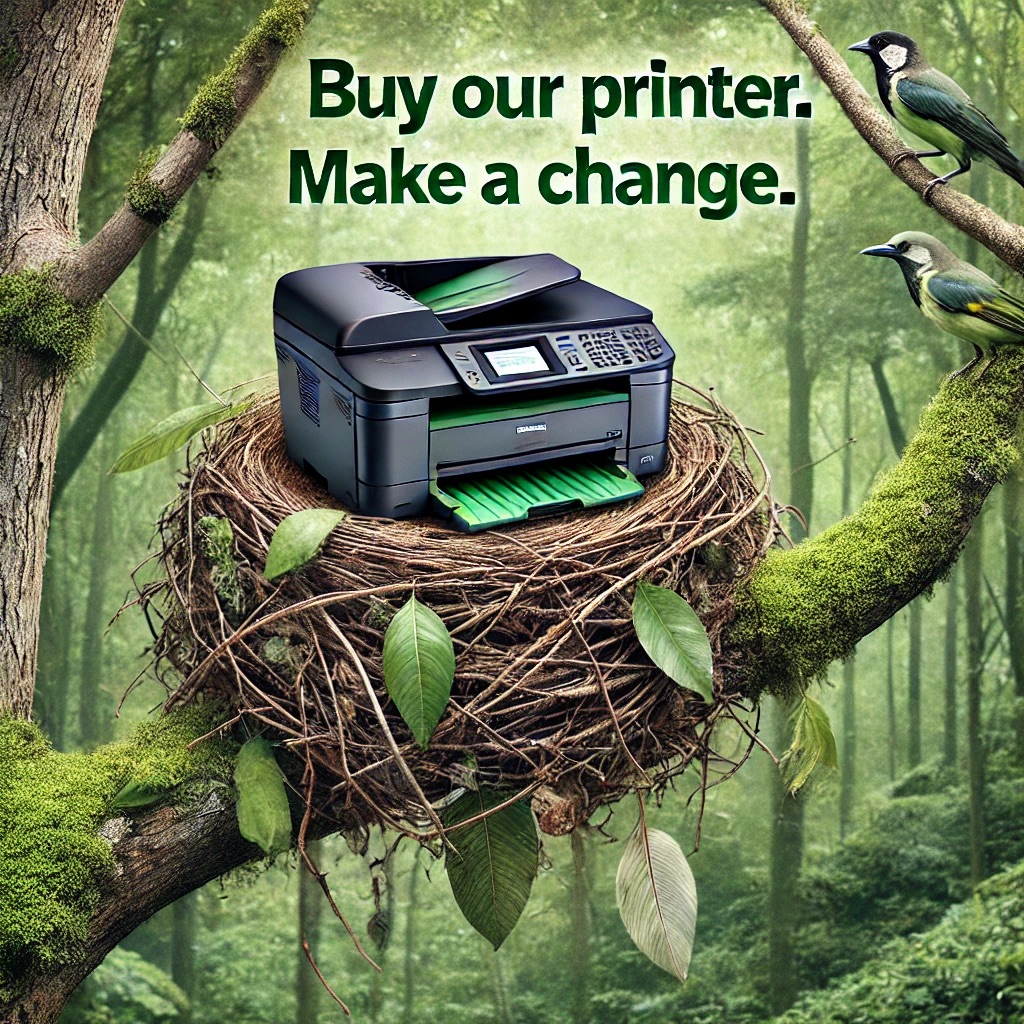
“A marketer’s advertisement features a picture of a laser printer in a bird’s nest balancing on a tree branch, surrounded by a dense forest. In green type, the marketer states, “Buy our printer. Make a change.” (§ 260.4 (d) Example 3)”
This hypothetical ad combines green imagery with text to portray a product that is in harmony with nature and has no negative environmental impact. The ad doesn’t explicitly claim environmental benefits, but the images and text imply it. This can be deceptive as the marketer likely can’t prove these claims. Images might look nice, but unless you can substantiate the claims they show, they are considered deceptive.
Green Imagery in the US Courts: Gain and Arm & Hammer
A real-world example of greenwashing using imagery comes from a class action lawsuit filed against Procter & Gamble in the U.S. The lawsuit focuses on the packaging of Gain laundry detergent, which features images of butterflies, leaves, and flowers, suggesting the product is eco-friendly. Consumers argue that these visuals create the false impression that the detergent is free of toxins and safe for both people and the environment. In reality, the product contains 1,4-Dioxane, a chemical considered to be harmful. The case is still pending, and its outcome remains to be seen.
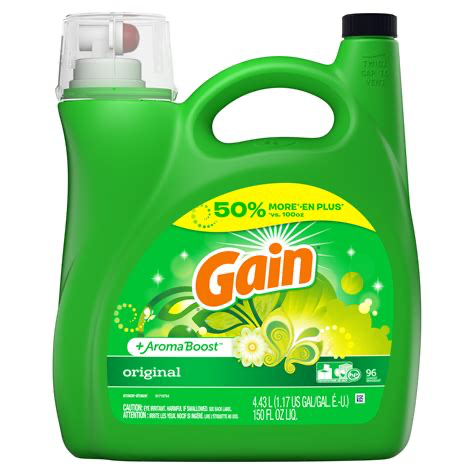

In another case, Arm & Hammer paired the phrases “The Standard of Purity,” “Naturally Fresh,” and “Clean Burst” with the image of a blue ocean wave for a detergent that also contained 1,4 Dioxane. The lawsuit was dismissed but nevertheless cost the company legal fees.
Deceptive imagery isn’t just limited to green themes. The use of flags and patriotic images to imply that a product has been made in the USA can also be deceptive. To learn more about navigating these claims, check out the Softly blog, Red, White and RISK: How to Safely Claim your Product is Made in the USA.
Enter the United Kingdom’s CMA
The FTC isn’t the only agency that offers green claim guidelines. The United Kingdom’s regulatory agency, the Competition and Markets Authority, introduced its Green Claims Code in 2021 and is relatively new to the greenwashing game. The principles of the CMA green codes can be used as a checklist to avoid deceptive practices. Check the six principles to see if you can confidently display your claims.
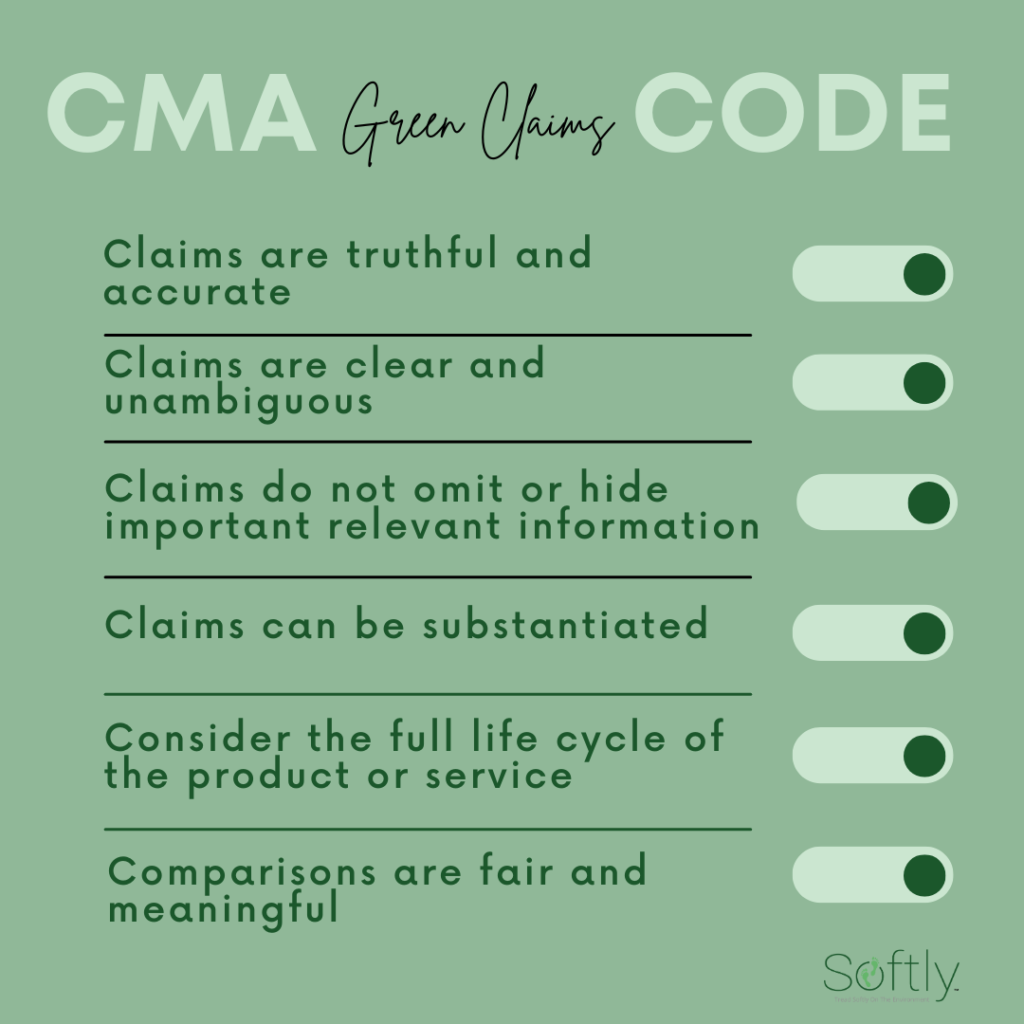
The CMA is currently investigating deceptive advertising of fast-moving consumer goods (FMCG), which include essential products that consumers use regularly, like detergent, shampoo, and perfume. One of the biggest companies in this sector under the CMA’s radar is Unilever.
Unilever’s Use of Vague Imagery

The CMA is looking into a wide range of Unilever products for the use of vague environmental claims. The products include household cleaners, health and beauty products, and fragrances under the brand names Cif, Dove, Comfort, and Lynx. Vague eco-friendly claims and ‘natural-looking’ images such as green leaves and logos are under scrutiny.
In a press release from the CMA, Sarah Cardell, its Chief Executive, has some advice for companies both big and small:
“Our work to date has shown there could be greenwashing going on in this sector, and we’ll be scrutinising companies big and small to see whether their environmental claims stack up. Now is a good time for businesses to review their practices and make sure they’re operating within the law.”
This advice is relevant for all companies, regardless of where they sell their products. It is important to be diligent in environmental claims and practices and to comply with regulations.
Regulation Changes
Changes in regulations and lawsuits are happening quickly, so staying informed is important. Don’t let them catch you off guard. Softly Solutions has innovative and easy-to-use tools that can help you stay up to date by providing access to regulatory updates, case law, and competitive insights, all in one place. This way, you can confidently make accurate green claims while avoiding legal risks.
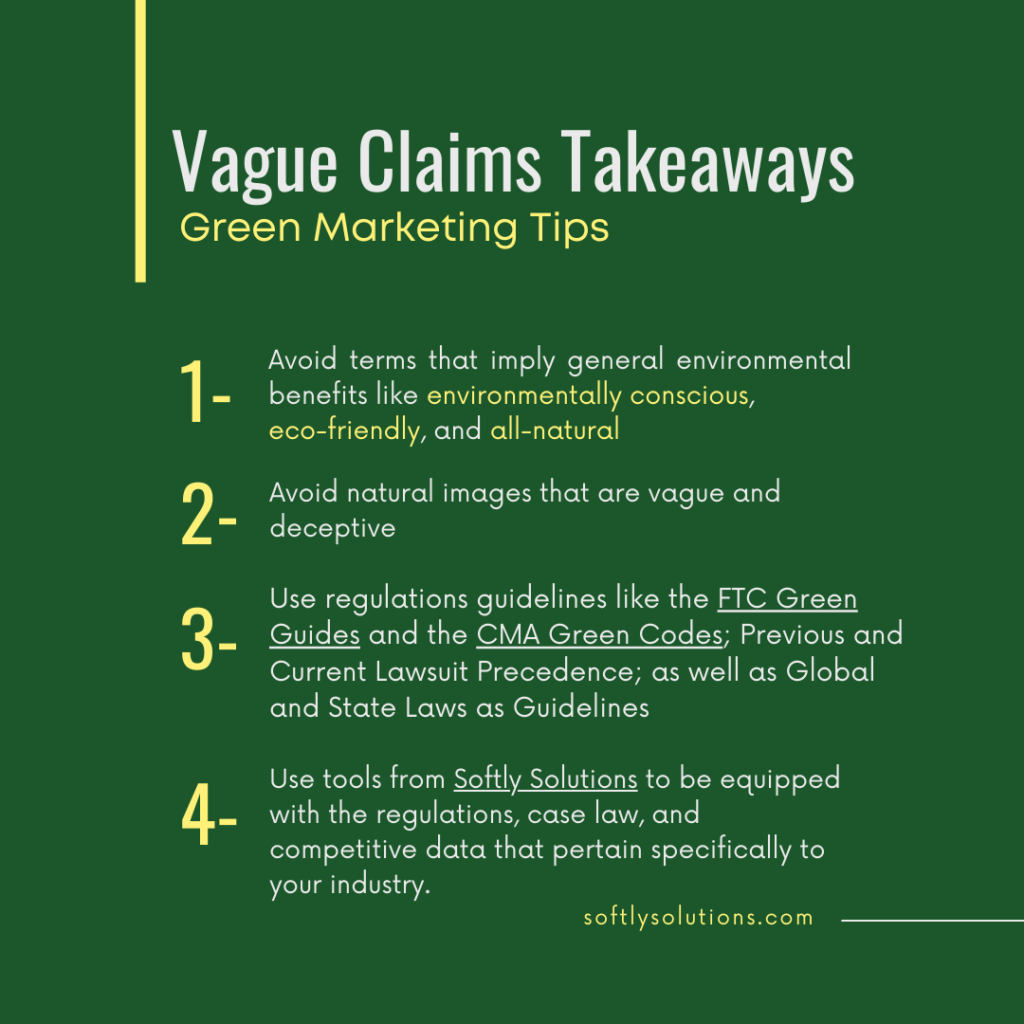
How To Avoid Greenwashing As a Business?
- Product labels should attract customers while providing accurate information—so avoid the temptation of using vague environmental claims or imagery to boost sales.
- Setting clear and achievable sustainability goals is a way to avoid greenwashing. By setting and working towards tangible goals, your business can showcase its dedication to authentic sustainability.
- Transparency and honesty are cornerstones of avoiding greenwashing. Consumers appreciate businesses that are open about their practices and willing to share both achievements and setbacks. When communicating your sustainability efforts, provide clear and honest information that accurately reflects your actions.
- Collaborate with suppliers and partners who prioritize sustainable practices. Consider factors such as resource sourcing, production methods, and labor conditions. By selecting partners who share your values, you contribute to a positive ecosystem that supports ethical practices.
- Regularly monitoring and reporting on your businesses progress is important for maintaining transparency. Establish a system to track and measure your sustainability efforts over time; this not only helps you assess your achievements but also identifies areas for improvement. Create reports that detail your progress towards sustainability goals. Include metrics, statistics, and case studies that demonstrate the impact of your initiatives. Use these reports to communicate your successes to stakeholders, employees, and consumers.
Conclusion
Agencies like the U.S. FTC and U.K. CMA offers guidelines to help you avoid greenwashing, and staying informed about current lawsuits can help you steer clear of legal pitfalls. New tools from Softly can simplify this process, helping you stay compliant and informed.
The bottom line is: clear, honest communication about your product’s environmental impact is not only ethical but essential for protecting your brand.
References
- Brand protection: How to safeguard against green marketing pitfalls
- https://www.ftc.gov/sites/default/files/attachments/press-releases/ftc-issues-revised-green-guides/greenguides.pdf
- “Create a picture of a laser printer in a bird’s nest balancing on a tree branch, surrounded by a dense forest. Make printer look natural and part of the nest. In green type, state ‘Buy our printer. Make a change.’” prompt. ChatGPT, version 4.0 OpenAI, 9 Sept. 2024, https://openai.com/index/chatgpt-plus/
- Hangen-Hall et al. v. The Procter & Gamble Co.
- Charles et al. v. Church & Dwight Co. Inc.
- Making environmental claims on goods and services – GOV.UK
- Fast Moving Consumer Goods (FMCG) – GOV.UK
- CMA to scrutinise ‘green’ claims in sales of household essentials – GOV.UK
